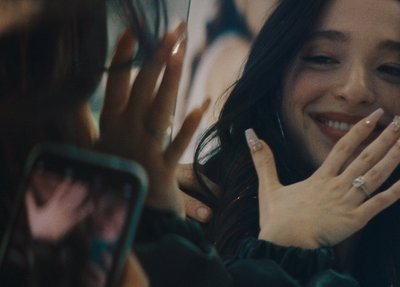What the M?!
Oli on Sept. 13, 2021
We hope most people understand when our office says something is R-rated – it’s not for little kids right? But M? What on earth is that – mum’s only content?
We’ve written about M before but as a relatively new member of the team here I’d thought other people might find this topic as interesting as I do.
Here at the Classification Office we usually get to see and classify age restricted films with content like violence or sex. We classify unrestricted content less often, including G (general audience), PG (parental guidance) or M. The Film and Video Labelling Body will often assign ratings to restricted films.
M is given to films and games that can be shown to anyone but are more suitable for mature audiences. This is most often done under the cross-rating system. That means if a film was classified unrestricted in Australia or the UK the equivalent information is carried over for New Zealand audiences.
However sometimes it’s drawn to our attention that an M isn’t quite right for our audiences here, or its fine but needs a better descriptive note to warn people what’s in the film.
We always have to consider our audience here in Aotearoa. Kiwis have different challenges to other countries and different sensitives towards themes like sex, violence, cruelty, horror, and crime. Each country is also under their own classification legislation, so while there are many similarities, there will always be differences. For example, Promising Young Woman, released earlier this year, was R18 here but had a MA15+ in Australia.
In a recent blog, staff member Rebecca discussed our reasoning for giving this film a higher age restriction:
"In examining Promising Young Woman and in subsequent discussions, we recognised the film had merit for highlighting male entitlement and the entrenched narratives around sexual assault and victim-blaming. On the other hand, the film also serves rape-revenge narratives rather than empowering portrayals of someone dealing with the trauma of sexual violence. A high level of maturity is required to contextualise this.
We felt that the film's treatment of sexual violence would likely be triggering for viewers (of any age) who have experienced sexual assault or unwanted sexual advances. We also felt that even older teenagers would likely be shocked and disturbed by the recording of the rape and the murder scene, especially in light of the circumstances surrounding the recent Grace Millane murder case."
There are trends our classifications advisors have noticed over the years. Australia's Classification criteria means they're likely to rate higher for sex, nudity, and language, whereas in Aotearoa, we' tend to highlight sexual violence and violence.
Suicide Squad, released in 2016, was an example of this. The film initially received an M rating in the Australia and through the cross-rating system, it was carried over to Aotearoa. We reviewed the film after a complaint. We found in this case that the complaint had merit and change the rating to R13, warning for violence, horror and cruelty.
A Star is Born is also an interesting example – though we didn’t change the rating it received in the cross rating process, here in Aotearoa, we did add a warning for suicide. Chief Censor David Shanks explained why:
“Many people in New Zealand have been impacted by suicide. For those who have lost someone close to them, a warning gives them a chance to make an informed choice about watching.”
Rating films can be a tricky business, but we know how important it is for people to have all the necessary information about a film so they can decide whether it's right for them and their whānau.
We hope our descriptive notes that accompany classifications give you a good idea about some of the stronger content in the film before you watch it or let a child see it.
Other sites that have useful info for parents include the Internet Movie Database and Common Sense Media.
Subscribe to our blog
Stay up to date with the Classification Office blog.


